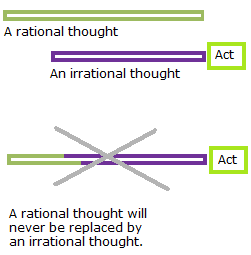The Kuriki method (the first edition in 2007) is a theory about Tourette’s syndrome (tic disorder) and obsessive-compulsive disorder to cure these diseases without medication. This theory is based on the author’s inference and interpretation regarding the structure of these diseases. Since it has been written for the psychoanalysts, reading will be difficult for people in general and it might be sometimes read erroneously. Therefore the Kuriki method must presuppose that the patient is treated by a nearby psychoanalyst, and that, between the patient and the Kuriki method, there is always the psychoanalyst. The explosion of emotional catharsis, which has strong repercussions, is done only for three seconds, once a week: beyond this rhythm, it would be an accident caused by negligence, and the psychoanalyst who is inexperienced in emotional catharsis must take responsibility for the temporary mental collapse caused by the accident. Also, to the patient who has weak capacity of logical reasoning, the psychoanalyst must explain well on the violent emotion of revenge caused by the illusory confusion between the person of the traumatic image in his head and the person in the real world.
Cure for Tourette’s syndrome (tic disorder) and OCD without medication
§48
The mechanism of weakening of the certainty of a rational thought, which gives way to an irrational thought in obsessive compulsive disorder.
How the certainty of a check yields to the need of a new check of the same thing?
While the rationalization in Freudian psychoanalysis is a strategy to keep the tranquility of the Ego in the Unconscious, the rationalization in the Kuriki method is an arbitrary selection of the legitimacy so that the Libido passes the Super-ego. The products of rationalization in obsessive-compulsive disorder are thoughts that are very irrational in the Conscious, and they will be big objects in the foreground of the Conscious, as well as tic movements, which are not natural movements for the Conscious, and coprolalia words, which are very disturbing for the Conscious. Neurosis, i. e., a means of repression needs to be a nonsense for the Conscious.
As a child of three years can have a tic disorder, tic disorder is not a disease of the Freudian Super-ego. Therefore, it is not a disease of the Freudian Ego. And coprolalia and obsessive-compulsive disorder are symptoms of infantilization, so there is no patient who is actually a little child. The upper layer of these neuroses is the KV, which is the mechanism of bodily repression of disagreeable bodily sensations, and the presence of the KV is a means of repression of the lower layer.
At the time of the execution of the act with an irrational thought under Compulsion, a rational thought yields to this irrational thought.
For example.
Irrational thoughts;
“The number 3 is good.”
“Check the gas one more time.” etc.
Rational thoughts;
“Number, I don’t care.”
“Check one time and that’s all.” etc.
There is a collision between the irrational thought and the rational thought. There are two types of executions of the act that follow this collision.
1. Execution of the act in order to end the conflict, which would otherwise continue.
2. The irrational thought amplifies as an object of the Conscious and the execution will be done, being forced by the amplification.
In both cases, anyway, the act will be done.

The rational thought will never be replaced by the irrational thought. The rational thought will not be denied, but remains as a right idea, without weakening. In order that the rational thought remains without being denied, the irrational thought must be very childish. The durability of the conflict between a rational thought and an irrational thought and the cycle of executions of acts are a means of repression of disagreeable bodily sensations. As there is no tic disorder without tic movement, there is no obsessive-compulsive disorder without execution of acts. The appearance of tic and the appearance of OCD are bodily symptoms. In addition, tic disorder with tic movements and obsessive compulsive disorder with acts are bodily diseases. These diseases are entirely under the power of the libidinal level.
Phobia
Phobia is a fear of a change of body condition, which is caused by secretion of adrenaline at the moment of a contact with a trigger. It is a bodily fear of a bodily fear. Phobia is not a neurosis of the repression type; phobia has no relationship with mass of emotion. The cure of a phobia is done immediately, but a reasonable fear of something dangerous cannot be treated.
In obsessive-compulsive disorder, anxiety is a bodily symptom. The Libido produces a bodily sensation, which is an imitation of the sensation of the secretion of adrenaline. Then, the Conscious interprets this bodily sensation as a feeling of anxiety.
